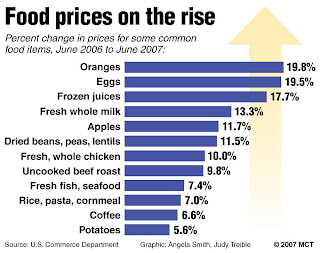The All-Natural Taste That Wasn’t
Published: April 23, 2008
FOR a seller of “chilly bliss” and “swirly goodness,” Pinkberry has taken a lot of heat.

Pinkberry uses three different sugars.
Pinkberry, a frozen yogurt chain, inspired a passionate following when its first store opened, in West Hollywood in 2005. Its “original” flavor is smooth and tangy, and tastes like nothing so much as plain yogurt with a small amount of sugar.
The company initially touted its product as healthy, nonfat and all-natural, but did not say exactly what was in it.
“It always seemed too good to be true,” said Christina Yeo, a graduate student, at a Manhattan Pinkberry on Monday. “That’s why people were so curious about it.”
After a class-action lawsuit was filed last year accusing the company of deceptive marketing, Pinkberry posted ingredients on its Web site. But that got little notice until the case was settled two weeks ago. (The company said the lawsuit had nothing to do with the posting.)
There is, it turns out, a great deal more than yogurt in those costly white cups.
The ingredients list for Original Pinkberry has 23 items. Skim milk and nonfat yogurt are listed first, then three kinds of sugar: sucrose, fructose and dextrose. Fructose and maltodextrin, another ingredient, are both laboratory-produced ingredients extracted from corn syrup.
The list includes at least five additives defined by the United Nations Food and Agriculture Organization as emulsifiers (propylene glycol esters, lactoglycerides, sodium acid pyrophosphate, mono- and diglycerides); four acidifiers (magnesium oxide, calcium fumarate, citric acid, sodium citrate); tocopherol, a natural preservative; and two ingredients — starch and maltodextrin — that were characterized as fillers by Dr. Gary A. Reineccius, a professor in the department of food science and nutrition at the University of Minnesota and an expert in food additives.
Some of them can be characterized as natural, while others are clearly not, he said.
“Isn’t it amazing how many additives it takes to make something taste natural?” Dr. Reineccius said.
Many of the ingredients give Pinkberry qualities that nonfat frozen yogurt would not have naturally, Dr. Reineccius said.
“They are there to make something smooth, sweet and tangy that would otherwise be gritty and flavorless in a frozen state,” he said.
Pinkberry acknowledged that some of the claims it made when its stores first opened could not be backed up.
In an e-mail message, Pinkberry’s chief executive, Ron Graves, said: “In the company’s early days some of its point-of-sale material contained the words ‘all natural’ — which was an honest mistake by the founders. The yogurt used was ‘all natural,’ which was the source of confusion.”
Pinkberry’s fiercest competitor, Red Mango, uses 14 ingredients in its frozen yogurt, the first of which is water. It also lists four types of active cultures. (Red Mango’s Web site has always listed the product’s ingredients.)
Both companies use nonfat dairy products, sweeteners, emulsifiers and acidifiers, but only Pinkberry’s frozen yogurt includes artificial colors and flavors. Guar gum, another ingredient, is commonly used in frozen desserts to slow the melting process. (Pinkberry’s Web site touts the product’s “pouty peaks,” which guar gum helps to achieve.)
Pinkberry and Red Mango now enjoy the Live and Active Cultures seal of the National Yogurt Association, certifying that their frozen yogurt contains at least 10 million live cultures per gram at the time of manufacture.
But the specific health effects of live cultures — now called probiotics — and how many of them are needed to provide a beneficial effect have not been determined.
In January another yogurt-related class action lawsuit was filed, against Dannon, challenging the company’s claims that the benefits of its trademarked probiotics were “clinically” and “scientifically” proven.
Pinkberry announced its certification two weeks ago, just as a preliminary settlement was reached in the class action suit. While saying it had done nothing wrong, Pinkberry agreed to donate $750,000 to hunger and children’s charities, and to pay the plaintiff’s legal costs.
“Personally, I would have preferred that the money go toward consumer advocacy against misleading food marketers,” said Ray Gallo, a lawyer for the plaintiff.
 Intro
Intro














































